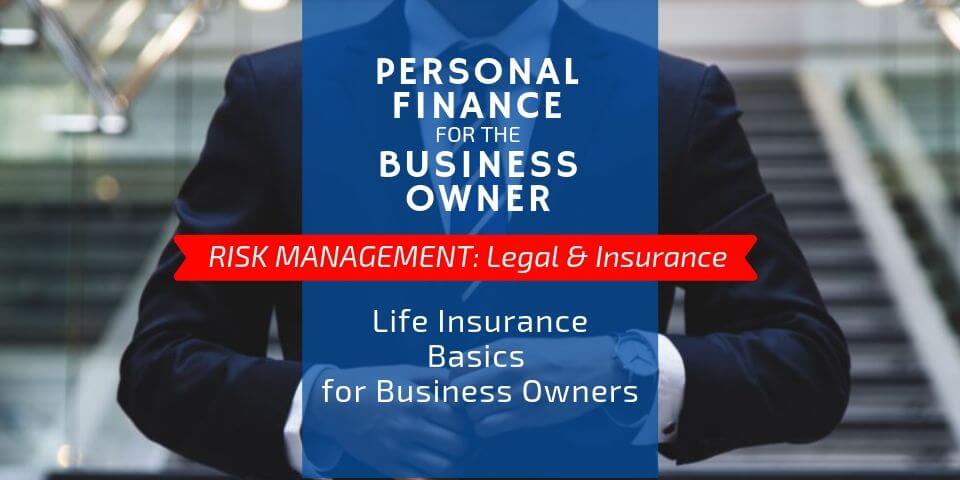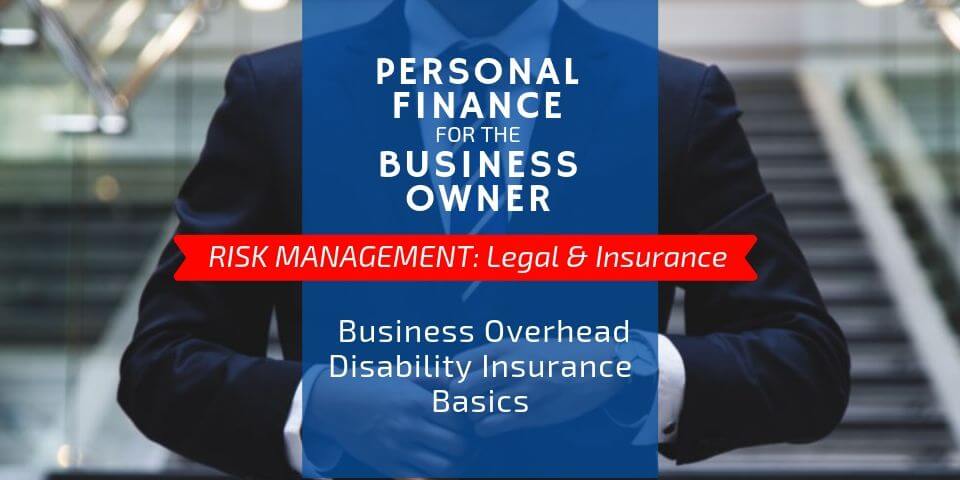
Life Insurance Basics – Considerations for Business Owners
August 15, 2019
Business Overhead Disability Insurance: What To Know Before You Buy
September 3, 2019Personal Disability Insurance – Policy Types Needed by Business Owners

In my early career, I didn’t really see the value of personal disability insurance. I was young, fit, and felt that I could conquer the world. However, now that I have a family and have the responsibility of owning a business, I recognize not just the value of such disability coverage, but its absolute necessity as well.
Podcast Time Index for “What Is Disability Insurance and Why Does It Matter?”:
- 01:15 – What is Disability Insurance And Why Does it Matter?
- 03:57 – What is a Disability?
- 04:51 – Stats About Disability
- 10:24 – Types of Insurance
- 10:44 – Short Term
- 13:03 – Long Term
- 17:21 – So What Kind of Policy Do You Need?
- 20:32 – Wrap Up
Over this past 4th of July, my kids and I spent some time tubing on the Tennessee River. Anyone who has ever spent time on a tube knows that the older we get, the more it hurts. We took turns bouncing around and being thrown across the water at speeds of around 23 miles per hour. As one might imagine, after a full weekend of this, I was sore. There wasn’t a spot on my body that didn’t hurt. I tried to get a workout in at the gym following the weekend’s activities, and as a result, I could hardly move. All of this reminded me of how important it is to protect yourself from the risk of disability.
As a business owner, you work hard to build your business. Regardless of the product or service you offer, it is crucial to have your finances in order. That means maximizing profit, minimizing risk, and protecting your most valuable asset —YOUR ABILITY TO GENERATE INCOME. Many people hold a similar view of disability coverage as I did in my early career. They don’t fully understand the risk they are taking by not carrying this type of insurance coverage.
Recently, I spoke to a client whom I advised to purchase disability coverage to protect her income. She informed me that she didn’t believe that she would ever need it. I had to tell her that I would need to protect myself by putting in writing that I had strongly advised her to do so, and that she had declined. This surprised her, and she looked very sternly at me, saying, “Well, do you think it’s even possible?” When answering such a question, it is important to define what disability actually means.
Disability Defined
According to the ADA (Americans with Disabilities Act), a person with disabilities is defined as “A person who has a physical or mental impairment that substantially limits one or more major life activities.” Chances are, there are several people in your life that would fit that definition. My father and father-in-law were both disabled before the age of fifty-eight. My father-in-law was at work as a phone lineman when his life was forever changed. The gear that was meant to protect him while he was forty feet up in the air failed. The result sent him to the concrete below and disabled him before the age of fifty. Similarly, my own father was at work when a vehicle rear-ended him and left him disabled. So, is it even possible? By the numbers, it is absolutely possible.
The U.S. Social Security Administration states that one in four 20-year-olds find themselves disabled before they reach retirement age. It is staggering to think that we have a twenty-five percent chance of becoming disabled during the course of our lives. Meanwhile, the American Community Survey estimates that the overall rate of people with a disability in the U.S. is 12.8%. This means that in a population of 300 million people, over 30 million are disabled. Per the same survey, the percent of people with disabilities varies greatly by state. The same is true of people with disabilities in employment, poverty, earnings, and health behaviors. What this boils down to is that it doesn’t matter where you live, what your occupation is, how much money you make, or how well you take care of yourself. Disability affects us all.
With numbers like these, it seems like the wisest decision we could make when managing our risks is to provide ourselves with the safety net of disability coverage. The idea really hits home when you factor in the disparity in earnings between those with disabilities and those without. The average earnings for a person age sixteen or older with disabilities were $22,000 in 2016. Comparatively, a person in the same age demographic with no impairments averaged $32,000. Those who were physically or mentally impaired saw a 30% decrease in average earnings compared to those with no disability.
Types of Personal Disability Insurance Used by Business Owners
Now that you understand the necessity of dealing with the risk of disability, let’s take a look at the types of coverage and what they are best suited for. In their most basic forms, there are two types of disability insurance, short-term (STD) and long-term (LTD). As their names suggest, they provide benefits on either a short-term or a long-term basis.
Short-term coverage will cover your income for a period of three to six months. Typically, this is very inexpensive protection. It is extremely helpful should you find yourself unable to work and without an emergency fund. Once you have built up an emergency fund that is substantial enough to support three to six months of expenses, short-term coverage is no longer a necessity. Until then, you really need to keep a policy.
The latter of these two basic coverages is long-term disability insurance and it comes in two flavors: own-occupation and any-occupation. Think of them like pepperoni and sausage if you’re a pizza connoisseur like I am. Both of these policies cover you for many years. The length of the benefit typically lasts to the age of 65 or 67. The idea behind this is that it will carry you until you have other income in place. So what are the differences?
Own-occupation vs Any-occupation Disability Coverage
Own-occupation insurance covers your specific work task. A great example of this would be a dentist. Dentists use their hands to masterfully wield their tiny tools and instruments while working within a relatively small space. It is very important that they have strong, steady, capable hands to perform their jobs. If a dentist were to injure their hands and could no longer use them to perform their craft, own-occupation coverage would provide a benefit to them.
It is possible that they could still teach or even write a book on dentistry. This coverage would allow them to work in these areas and still receive a benefit. However, not all careers are eligible for “own-occ” insurance. As a certified financial planner, I consult with business owners and operate a podcast. I use my ability to speak to complete my job duties. So, if I were to hurt my hand, I could still work. Therefore, I am ineligible for own-occ, but I need disability coverage too. So how do I protect myself from the event of becoming disabled?
Any-occupation coverage is the second form of long-term disability insurance. Basically, if I can’t work, it pays a benefit. If I were stricken with some rare tongue cancer and my tongue had to be removed, I would no longer be able to speak. This could prevent me from being able to effectively do my job or ‘any job’. Any-occupation is a safety net for a catastrophic event such as this. In both my father and my father in-law’s cases, they were suddenly unable to work. This type of coverage kicked in, providing a benefit for each of them. In either scenario, things could have been much worse if they didn’t have that safety net. All of this is to say, don’t leave yourself vulnerable to this type of risk. The short-term savings will mean nothing if you are one of the millions of Americans who become disabled in their lifetimes.
RELATED CONTENT: Who Saves You More When Buying? The Captive or Independent Insurance Agent?
But Which Type Of Policy Should I Consider?
- You need a long-term disability policy that covers 60% of your total income. If you make $100,000 per year, you need a plan that pays a $5,000 per month benefit. The reason for this is that social security will cover, roughly, thirty-five to forty percent of your income. The combined benefits will make you whole.
- You want a 90-day elimination period. If you have an emergency fund, you don’t need a shorter period.
- If it is available to you, purchase own-occupation coverage. Remember, not all careers are eligible for this coverage type.
- Purchase a policy that is non-cancellable and is guaranteed renewable. This is a rider that makes sure your premiums do not change and that your policy cannot be canceled by your insurer, for any reason.
- You will need enough coverage to get you to age sixty-seven. Social Security becomes fully insured at this age. If possible, take out a plan that covers you until age seventy.
- Make sure that you have a residual disability rider. If you find yourself only able to work 10 hours of a 40-hour workweek because of your disability, this covers the 30 hours that you were unable to work.
- Inflation area options are a must. This ensures that your benefit will increase, proportionately, with inflation. If you receive a $5,000 per month benefit when you’re thirty years old, that same benefit isn’t going to be worth as much when you’re sixty. So it is very important to have this in your policy.
- Most importantly, pay for this disability policy out of your home budget. Your home budget uses after-tax dollars and will ensure that your benefit comes to you tax-free after you become disabled. Purchasing the plan with your business budget uses pre-tax dollars. Therefore, your benefit will be taxable.
Of course, these suggestions need to be discussed with your insurance agent. They will know your specific business and personal situation and be able to recommend the best disability insurance for you.
Protect yourself, your family, and your business as soon as possible. Buy yourself the peace of mind that, in any circumstance, you will be able to weather the storm. Take the tips and use them to your advantage and remember that your ability to generate income is your single greatest asset. And don’t miss our other related Risk Management articles in this series – Personal Finance for the Business Owner.



